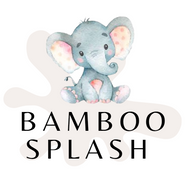As parents, we always strive to provide the best for our little ones. From their clothes to their food, we want everything to be perfect. When it comes to nappies, the choice between disposable and cloth can be a tough one. While disposable nappies are convenient, cloth nappies have several benefits, especially when it comes to a baby's hip development.
What is Hip Dysplasia?
Hip dysplasia is a condition that affects the hip joint. It occurs when the ball and socket joint of the hip do not fit together properly. This can cause the hip joint to become unstable and lead to early degeneration of the joint. Hip dysplasia is more common in girls than boys and can be caused by several factors, including genetics, breech birth, and swaddling.
How Cloth Nappies Can Help
Cloth nappies provide several benefits that can help promote healthy hip development in babies. Here are some of the ways cloth nappies can help:
1. Cloth nappies allow for better hip positioning.
Cloth nappies are designed to be snug around the baby's waist and legs, which helps to keep the hips in a healthy position. The legs are free to move, and the hips are allowed to develop naturally.
2. Cloth nappies promote healthy hip joint development.
3. Cloth nappies can reduce the risk of hip dysplasia.
Studies have shown that using cloth nappies can reduce the risk of hip dysplasia in babies. In fact, a study published in the Journal of Pediatrics found that the incidence of hip dysplasia was significantly lower in babies who wore cloth nappies compared to those who wore disposable nappies. The International Hip Dysplasia Institute says "The healthiest position for the hips is for the hips to fall or spread (naturally) apart to the side, with the thighs supported and the hips and knees bent"
Conclusion
Choosing cloth nappies for your baby can have several benefits, especially when it comes to promoting healthy hip development. While disposable nappies may be more convenient, cloth nappies provide a more natural and healthy alternative. By allowing your baby's hips to develop naturally, you can help reduce the risk of hip dysplasia and promote overall health and well-being.




